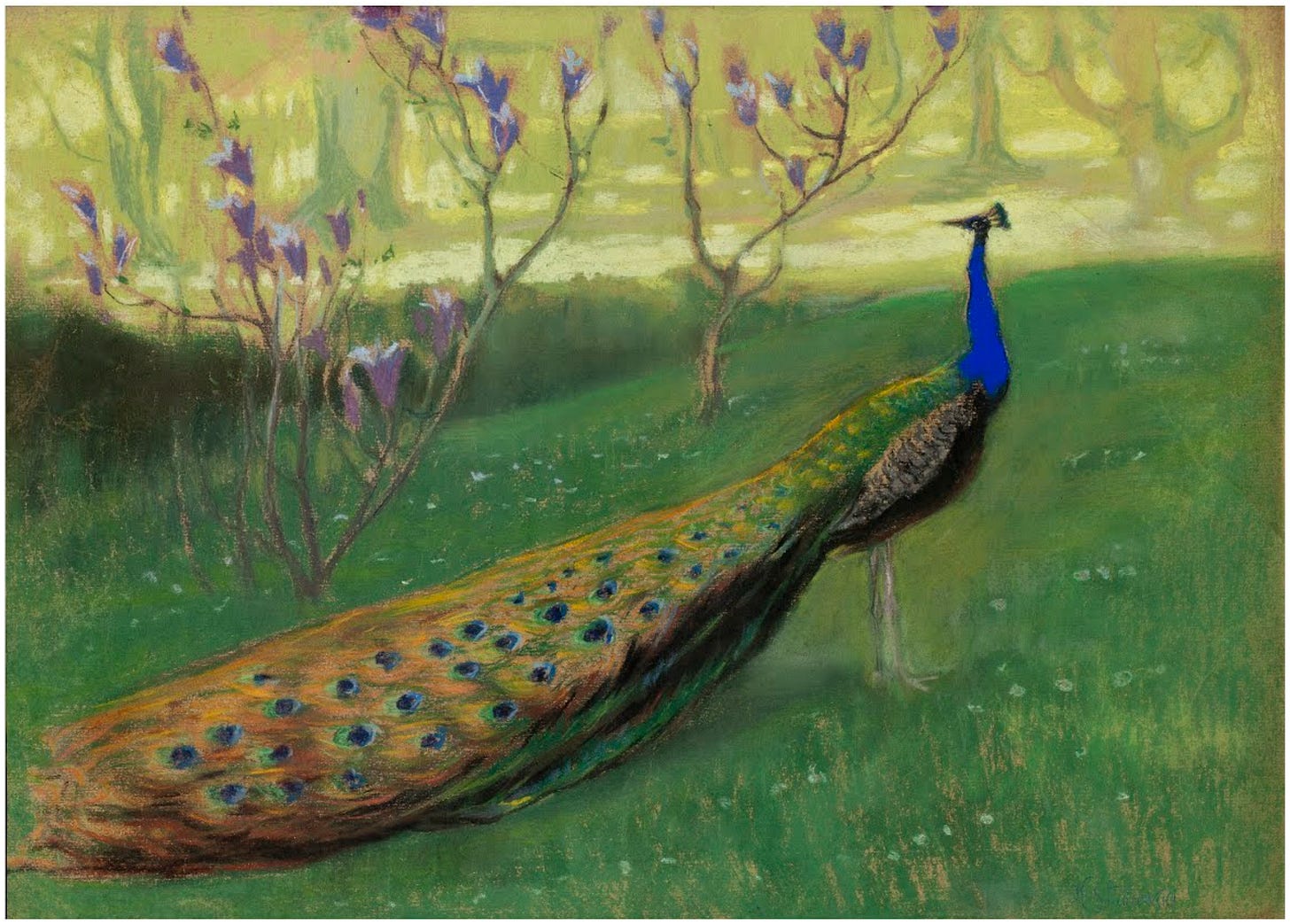#72. PEACOCK / PAÓ
Reality is not that external scene but the life that is lived in it / La realitat no és l'escenari exterior, sinó la vida experimentada a l’interior
How I have brought him would be long to say.
From high descends the virtue, by whose aid
I to thy sight and hearing him have led.
Divine Comedy, Purgatory’s Canto I, by Dante Alighieri
PEACOCK
Extravagance and vanity, the peacock is the solar bird of immortality. The words are insufficient to describe the qualities of the peacock's tail. The metaphor of a hundred-eyed tail that sees it all is one of many attempts to capture the ineffable mystery of the peacock. An ancient Hindu saying goes that the peacock has "the feathers of an angel, the walking of a thief and the voice of a demon." In ancient Greece, the peacock belonged to Hera, the queen of Olympus. Christian and Byzantine art, inspired by Persian artists, saw the luminosity of the peacock’s tail as an image of the vault of heaven tied to the incorruptible eternity of the soul. In Chinese culture, it embodies peace and prosperity. In Islam, the cosmic tree is usually represented accompanied by two symmetrical peacocks to express how human duality comes from unity. The peacock is an universal image of the whole, the tail contains all the colors of the light spectrum but it is based on a fragile balance: the peacock closes its tail without warning and the wonder fades.
“The subject matter . . . is not that collection of solid, static objects extended in space but the life that is lived in the scene that it composes; and so reality is not that external scene but the life that is lived in it. Reality is things as they are.”
Wallace Stevens
Com l’he guiat, seria llarg de dir;
de dalt baixa una força que m’ajuda
a portar-lo a veure’t i sentir-te.
Divina Comèdia, Cant I del Purgatori, de Dante Alighieri
PAÓ
Extravagància i vanitat, el paó és l’au solar de la immortalitat. Les paraules són insuficients per descriure les qualitats de la cua del paó. La metàfora d’una cua de cent ulls que ho veuen tot és un dels múltiples intents d’atrapar el misteri inefable del paó. Un antic refrany hindú afirma que el paó té “les plomes d’un àngel, el caminar d’un lladre i la veu d’un dimoni”. A la Grècia antiga, el paó pertanyia a Hera, la reina de l’Olimp. L’art paleocristià i bizantí, inspirant-se en el persa, veia la lluminositat de la cua del paó com una imatge de la volta del cel lligada a l’eternitat incorruptible de l’ànima. A la cultura xinesa, encarna la pau i la prosperitat. A l’islam se sol representar l’arbre còsmic acompanyat de dos paons simètrics per expressar com la dualitat humana prové de la unitat. El paó és una imatge universal de la totalitat, la cua conté tots els colors de l’espectre lumínic però la plenitud es basa en un equilibri fràgil: el paó tanca la cua sense avisar i la meravella s’esvaeix.
“El que veritablement importa… No és el conjunt d'objectes sòlids i estàtics que s'estenen en l'espai, sinó la vida que es desenvolupa en aquest escenari. La realitat no és l'escenari exterior, sinó la vida experimentada a l’interior. La realitat és les coses tal com són.”
Wallace Stevens












La Flannery O'connor en cuidava al seu jardí... :). En un petit assaig, "The King of the Birds"', en diu coses molt boniques:
"Once or twice I have been asked what the peacock is "good for" - a question which gets no answer from me because It deserves none."....